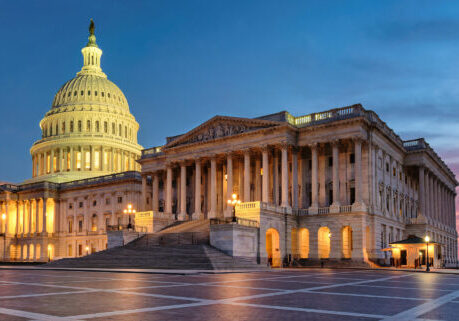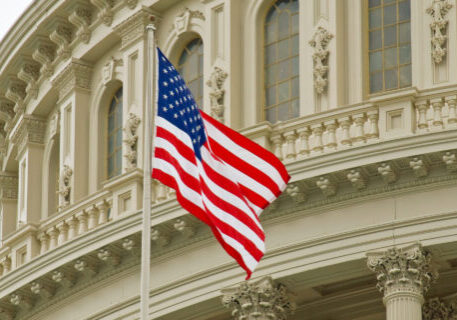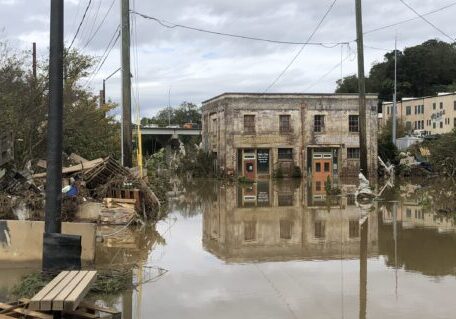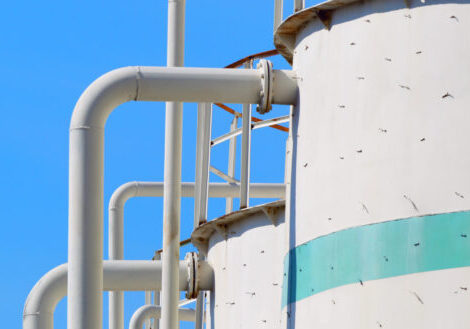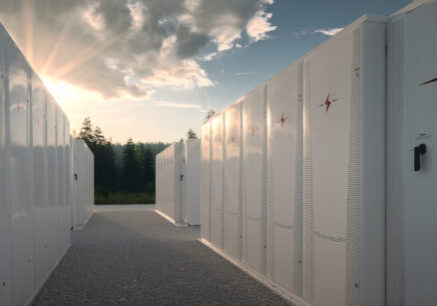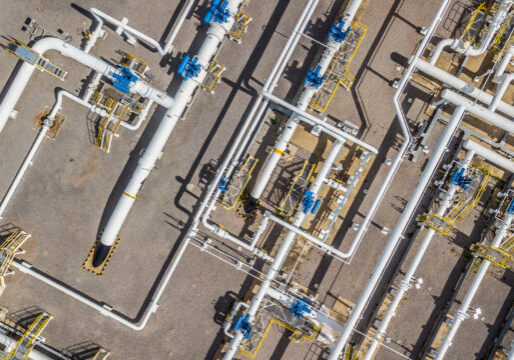February 7, 2018
The Launch of a U.S. Offshore Wind Industry
By Val Stori
Leadership in the State of the State
A little over a year ago, U.S. offshore wind (OSW) history was made—thrice. The first U.S. offshore wind farm began spinning off the coast of Rhode Island; BOEM completed its most successful offshore wind lease auction to date, awarding Statoil a wind lease for over $42 million; and New York Governor Cuomo announced a 2400 MW offshore wind goal by 2030 in his State of the State. A little later in the year, two Maryland projects blew away cost expectations, signing contracts to deliver 368 MW of offshore capacity at $0.132/kWh. Contributing to the growing list of major milestones for the U.S. offshore wind sector, last week the Governors from both New York and New Jersey announced commitments to launch the nation’s largest offshore wind solicitations. These commitments confirm the strong business case for offshore wind.
The actions of Governor Andrew Cuomo and Governor Phil Murphy demonstrate how executive leadership and state-level policy can play an essential role in the commercialization of the offshore wind industry. Now, Rhode Island, Connecticut, Massachusetts, New York, and New Jersey each have policies to support and stimulate offshore wind development in the Northeast. New Jersey Governor Murphy’s Executive Order directing the New Jersey Board of Public Utilities (BPU) to implement the 2010 Offshore Wind Economic Development Act (OWEDA) and develop action plans to meet the goal of 3500 MW by 2030 brings the Northeast’s total offshore wind target commitment to 7500 MW by 2030. (New York’s utilities and load serving entities are required to procure 2,400 MW by 2030, and Massachusetts’ utilities are required to procure 1,600 MW by 2027.)
Creating Workforce and Economic Development Opportunities
While the business case for U.S. OSW is clear, the challenges of building a supply chain, achieving significant scale for cost reductions, and expanding port infrastructure remain. The recent announcements from both New York and New Jersey address these challenges. Each Governor expressed his state’s commitment to offshore wind for reduced GHG emissions and other renewable energy attributes, as well as a desire to strengthen workforce development, economic development, and infrastructure. Governor Murphy’s Executive Order directs the BPU to work with the Department of Environmental Protection to create an Offshore Wind Strategic Plan that would focus on achieving scale to harness cost reductions, job creation, supply chain development, business development, and workforce opportunities.
New York’s Offshore Wind Master Plan addresses these challenges by presenting a comprehensive planning process that addresses finance risk, costs, and workforce/infrastructure needs. It includes twenty accompanying studies, one of which focuses on workforce development and another on infrastructure. The studies explore primary industry needs such as component and equipment manufacturing, port infrastructure expansion, and workforce skills in manufacturing, installation, and operations and maintenance (O&M). The Workforce Opportunity study estimates that state’s offshore wind workforce could peak at 5000 jobs in 2028 in manufacturing, installations, and O&M. These jobs would yield $6 billion in in-state expenditure. Similarly, Massachusetts is looking to cultivate jobs in the offshore wind sector and not only has invested in the New Bedford Marine Commerce Terminal, but also has produced a port infrastructure assessment identifying locations that can support construction and operation activities. The Assessment of Ports and Infrastructure study accompanying the NY Master Plan likewise assessed the needs and capacity of the state’s port facilities for all phases of OSW development. The assessment screened 65 port sites and identified three potential areas—all with some level of infrastructure upgrades—with capabilities to support OSW development:
- New York Harbor: potential siting for manufacturing, assembly, and staging
- Hudson River: potential siting for manufacturing
- Long Island: potential siting for O&M
Governor Cuomo announced that the state is committed to investing $15 million to support clean energy workforce development and infrastructure.
8GW by 2030 to Build an Industry
But what does it take to build an offshore wind industry in the U.S.? In the Northeast, the offshore wind resource potential is huge, estimated at 233 GW. According to the report U.S. Job Creation in Offshore Wind, under an offshore wind pipeline scenario of 8 GW by 2030 from Maine to Maryland, there is high probability that the U.S. would attract manufacturing of turbine blades, towers, foundations, and array cables. The recent offshore wind announcements by New York, New Jersey, and Connecticut are helping make that scenario a reality; additionally, Maryland approved the construction of 368 MW of OSW capacity in May 2017. Here’s how the planned and potential procurements play out in the Northeast:
| State | Procurement | Planned or Potential |
| New Jersey | 3500 MW x 2030 | Planned |
| New York | 2400 MW x 2030 | Planned |
| Massachusetts | 1600 MW x 2027 | Planned |
| Rhode Island | 100-150 MW x ? | Potential |
| Connecticut | 200-225 MW x 2025 | Potential |
According to Governor Cuomo’s 2018 State of the State, New York will begin procuring offshore wind energy with two initial solicitations of no less than 800 MW in 2018 and 2019. In June 2017, Massachusetts initiated its first solicitation under Section 83C of the state’s Act to Promote Energy Diversity for projects no less no less than 400 MW; Massachusetts’ electric distribution companies are expected to select winning bids in April 2018. New Jersey will initiate rulemaking for its Offshore Renewable Energy Credit (OREC) funding mechanism by the end of March, after which the Bureau of Public Utilities is directed to implement the OREC program and solicit 1,110 MW, the nation’s largest offshore wind solicitation to date. Connecticut and Rhode Island have not announced specific offshore wind targets or goals, but it is likely that each state will issue solicitations, piggybacking on the Massachusetts’ 83C contracts. Connecticut released a final solicitation for Class I renewable energy sources—OSW, fuel cells, and anaerobic digestion. Offshore wind is limited to a statutory maximum of approximately 825,000 MWh/ year (or 200-225 MW). The proposals are due by April 1st and the Connecticut Department of Energy and Environmental Protection anticipates selecting the winning bids in June. In early 2017, Rhode Island Governor Gina Raimondo announced an ambitious 1000 MW by 2020 clean energy goal; it is unclear how Rhode Island will meet this goal, but the state does have OSW long-term contracting authority for up to 150 MW of offshore wind.
Procurement Options
How states will procure offshore wind and capture the range of benefits associated with offshore wind development varies from state to state. New York’s Master Plan assessed the air quality and greenhouse-gas (GHG)-reduction benefits associated with the state’s 2,400 MW goal. It found that the avoided carbon emissions were equivalent to 5 million short tons of CO2 or approximately a $1.9 billion GHG-reduction benefit. The air quality benefits from the 2,400 MW build out are valued at $1 billion in public health benefits. In its supporting draft Offshore Wind Policy Options Paper, NYSERDA compared these benefits with the estimated program costs for various procurement options, finding that the GHG-reduction benefits are approximately equal to the most cost-effective procurement option. Of course, one of the main cost challenges associated with early-stage development of offshore wind is how to capture the cost savings from larger projects further down the pipeline. To this end, NYSERDA proposed procurements in tranches—Phase I would include the Governor’s announcement of two initial procurement rounds of at least 400 MW each in 2018 and 2019. Future procurement options and transmission and interconnection strategies are the primary subject matter of its draft Offshore Wind Policy Options Paper, which includes alternative approaches and recommendations for policy options for future procurements. Seven procurement mechanisms are presented for consideration for Phase I:
- Fixed REC: Project would receive a fixed REC price throughout the contract life under RES Tier 1 procurement structure (REC=Renewable Energy Credit)
- Bundled PPA: Utilities hold competitive procurement and developer gets set long-term PPA for energy and RECs
- Utility-Owned Generation: Utilities hold competitive procurement and developers design and build project, then transfer ownership to utility/s upon commercial operation
- Split PPA: Pairs the fixed-price REC procurement with fixed-price commodity energy and capacity procurement by utility
- Market OREC: NYSERDA provides the premium payment to projects under ORED contract based on net difference between project’s winning bid price and the actual project revenue from commodity sales in wholesale market
- Index OREC: NYSERDA provides the premium payment to projects under ORED contract based on net difference between project’s winning bid price and the average commodity market price in market index
- Forward OREC: Payment to winning projects would adjust every two years, allowing for both upward and downward adjustments. The OREC premium level for each 2-year period is calculated on 2-year energy and capacity price forecasts.
NYSERDA has recommended that the Public Service Commission consider all options but the Market OREC and the Fixed REC.
In New Jersey, 2010 legislation—Offshore Wind Economic Development Act (OWEDA)—created an OREC program, but a funding mechanism was never put in place. Governor Murphy’s Executive Order #8 directs the Board of Public Utilities to begin rulemaking to fill in the regulatory gaps governing the OREC program. The BPU has sixty days to initiate rulemaking to establish the OREC funding mechanism and the regulations for an OREC payment plan. Once the pricing plan is in order, the BPU is directed to solicit 1,100 MW and approve developers’ pricing plans as outlined in OWEDA.
Review of Massachusetts Bids
Massachusetts will have to carefully weigh the costs and benefits of economies of scale and costs as it reviews developers’ 83C proposals. In this initial solicitation, released according to the 2016 Act to Promote Energy Diversity, MassDOER and the load-serving entities called for proposals with two main provisions—proposals may be no less than 400 MW and may submit additional capacity bids between 200-800 MW with “phased in” options. Proposals were also required to include transmission and interconnection lead line and expandable options. Thus, when three developers submitted bids, those bids varied in size and pricing options (among other things). Revolution Wind by Deepwater Wind made the case for starting small and scaling up slowly to let the local supply chain develop, whereas Bay State Wind by Ørsted made the case to build out more quickly, thereby achieving scale and lower costs. As mentioned above, the question remains whether building 800 MW upfront is cost effective compared to a steady ramp up as proposed in the Revolution Wind project. The trajectory of the cost of energy from now through 2027 has a certain degree of variability, and other factors such as local supply chain benefits, economic & workforce development benefits, and competition from other states are difficult to quantify. Still, it is a downward trajectory, and the 2016 Act requires that subsequent projects be lower in cost than the initial ones that will be selected.
The next several years will be an exciting time for offshore wind in the U.S. Investment and development will accelerate as the market grows and develops in response to states’ ambitious targets. The states are playing a leadership role in addressing key cost challenges and investing in infrastructure and a skilled workforce to meet the nation’s growing offshore wind capacity commitments.
This blog post was also published in Renewable Energy World.








